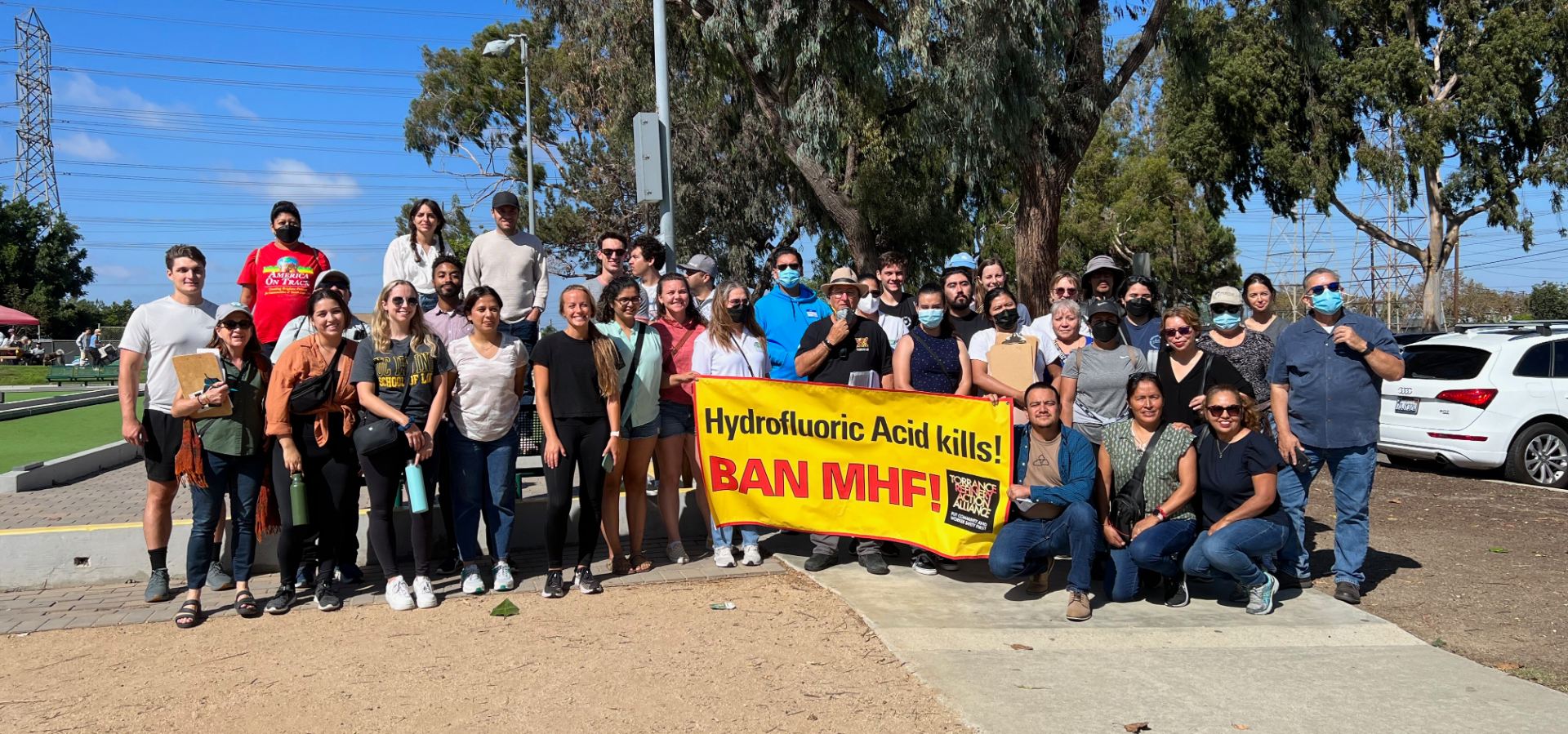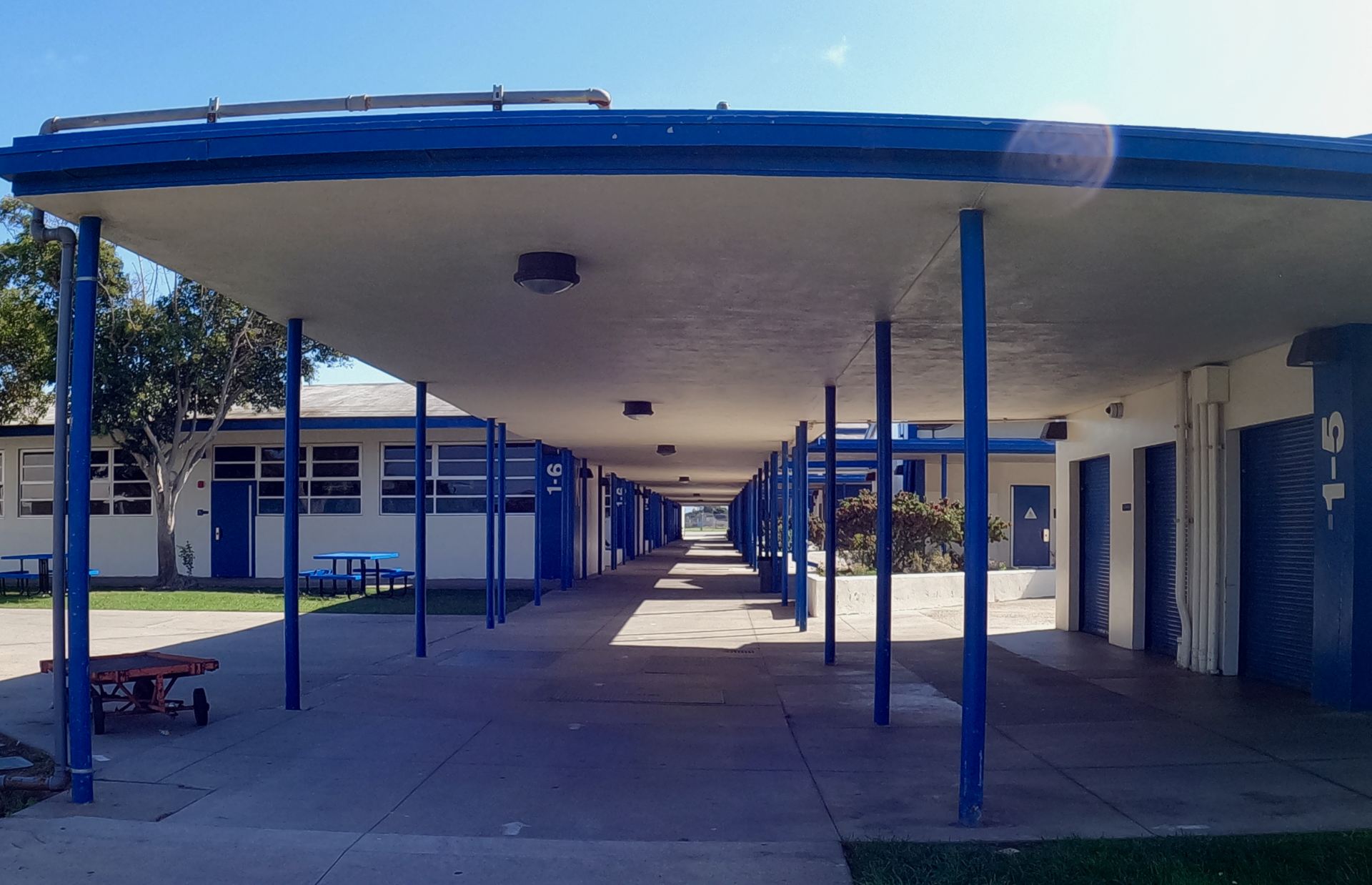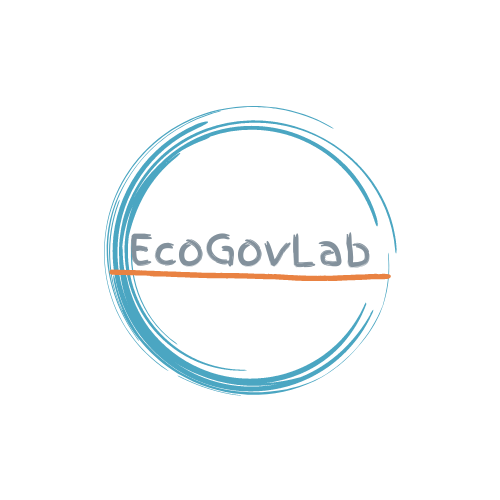Toxic Tour of Refineries in Torrance and Wilmington California Shows High Risk

Contact: kfortun@uci.edu (Kim Fortun: Professor, EcoGovLab)
On Saturday, October 1, the Torrance Refinery Action Alliance (TRAA), GREEN-MPNA (a community-based organization in Santa Ana, California) and UCI’s EcoGovLab partnered to host a “toxic tour” of the cities of Torrance and Wilmington. Torrance and Wilmington are home to the only two refineries in California that use hydrogen fluoride (HF) in their production processes. HF is one of the world’s most dangerous chemicals.
A release of HF can result from problems with the operations of a facility, natural disaster or an intentional act by a bad actor. Once released, HF can form a ground-hugging aerosol cloud that can drift for miles, potentially causing mass casualties. Importantly, there are vastly safer alternatives to HF that, if used, would make Torrance and Wilmington safer cities.
TRAA is a community-based organization that formed after a major explosion at the Torrance refinery in 2015. Since then, TRAA has played a lead role advocating for changes in the operations at the Torrance and Wilmington refineries so that they don’t use HF.
TRAA President Steve Goldsmith led the toxic tour, guiding nearly fifty participants in a caravan through neighborhoods bordering both refineries. Participants stopped at various sites, including parks and nearby schools – seeing for themselves the “vulnerability zones” around the refineries that could be impacted by a HF release. One participant, Fred Hernandez, said, “seeing the refinery stacks from the school grounds was striking. I would be afraid if my child was a student there.”
“The tour of the Torrance and Wilmington refineries was eye-opening,” said Victor Bustos, a member of the GREEN and the EcoGovLab Community Research Board. “It’s easy to understand how the daily hustle and bustle can make residents forget or overlook their proximity, but incidents like the 2015 Torrance explosion remind us to fight for stricter regulations and ask for alternative options that could prevent disasters and protect human life and well-being.”
Sandra Silva, also a member of GREEN and the EcoGovLab Community Research Board, described the the toxic tour as “equal parts energizing, informative, and impactful.” Silva also explained that “events like this are unique in how they set the stage for meaningful, deep-rooted change through collaboration and shared learning alongside community leaders from all walks of life and backgrounds.”
While many communities do not have refineries as neighbors, many do have industrial operations with potential for dangerous chemical releases into the community. The largest industrial operations that could release dangerous chemicals into the community are required to have Risk Management Plans (RMPs), which communities can use to lower chemical disaster risks. Santa Ana, California, has two RMP facilities, both very near homes and schools. UCI’s EcoGovLab and GREEN-MPNA are working together to characterize and respond to the risk that these RMP facilities pose.
The toxic tour was an opportunity to support TRAA’s work to reduce chemical disaster risks in Torrance and Wilmington, and to build collaborations between environmental justice organizations working to reduce the risks of chemical disasters in all communities.
This is an especially important time for this work. In August 2022, the US Environmental Protection Agency released for public comment a new rule, “Safer Communities by Chemical Accident Prevention Proposed Rule.” The rule has been widely criticized for failing to make communities safe. Read more about the rule here. Watch TRAA’s public comment on the rule here. TRAA encourages others to also submit comments. Here is a Sample Letter. Letters can be attached or pasted in here, with a copy sent toTRAA: info@traa.website.
Related News and Resources:
- TRAA Mission Statement – Torrance Refinery Action Alliance
- Video overview of 2015 Torrance disaster (4min)
- 2022: Local battle over toxic chemical at Torrance, Wilmington refineries continues (4p)
- 2002: Seven Years Later— A Progress Report: Eliminating The MHF Refinery Threat (2p)
- 2017: The ExxonMobil near-disaster you probably haven’t heard of (6p)
- 2017: Chemical Safety Research Board Animation of Torrance Explosion (full report + 7-min video)


